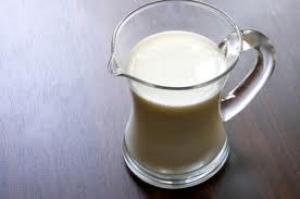World Markets

Underlying demand is still strong in international markets; however it is insufficient to absorb the current growth in supply.
Operating conditions for most Australian dairy farmers have consolidated in 2011/12 and national milk production has grown significantly for the first time in a decade. National output is expected to hit just under 9.5 billion litres this season, up from 9.1 billion last season.
Despite national production benefitting from favourable seasonal conditions in southeast Australia, the same or better conditions have prevailed in all major exporting regions, resulting in an extra 7.4 billion litres produced in 2011, and an additional 6.2 billion litres forecast for 2012,” Dairy Australia Managing Director Ian Halliday said.
“This compares with total production increase for these regions of 5.3 billion litres for 2009 and 2010 combined.
“This time last year, manufacturers who were not seeing sufficient returns from the local market had a fairly strong export market. However, export returns are currently being curbed by ample supplies in international markets pushing prices lower, and a continuing strong Australian dollar. Despite this, demand in export regions is still solid and exporting companies are still keen to keep throughput up in the factories and strong competition for milk supply is expected in the coming months.”
In drinking milk regions, the balancing act between fresh supply and demand continues as processors adjust their intake requirements and pricing to meet the demands of a highly pressured retail marketplace.
Aggressive retail competition for milk will continue to negatively influence farmgate prices for farmers in Queensland, central and northern New South Wales and Western Australia, and the current focus on private label discounts will allow little room for improvement.
Dairy Australia Manager Strategy and Knowledge Joanne Bills said there had been a complete switch between demand and supply on the international market.
“In the past few years price increases have been driven by demand, now this has reversed with additional supply driving prices lower," Ms Bills said.
“In the southern hemisphere we are seeing lots of clearing of stocks as the season comes to a close, while the northern hemisphere is gearing up for another year of strong production. Buyers are remaining cautious, waiting to see what happens with prices rather than buying ahead and securing supply beyond their immediate needs.”
Ms Bills said the price of butter and milk powders had been particularly hit hard because of the amount of supply on the market. Butter prices had fallen around 34 per cent in the past year, while milk powders were down 20-25 per cent.
“However, the positive for the Australian dairy industry is that cheese has remained reasonably stable, which is where our product mix is focused,” she said.
The international economic uncertainty means that there is still some risk for demand, although the key emrging markets responsible for growing consumption have a much healthier outlook than Eurozone countries.
“In terms of the international market impact on our domestic market, it means that margins will remain under pressure, which means farmgate prices for farmers will lower in 2012/13,” Ms Bills said.
Given current market conditions and the short term outlook, full year southern prices for 2012/13 are expected to be in a range between $4.50 to $4.90 per kgMS.
Leading export markets for Australia remain across Asia, while Japan remains the industry's largest single export region.






















